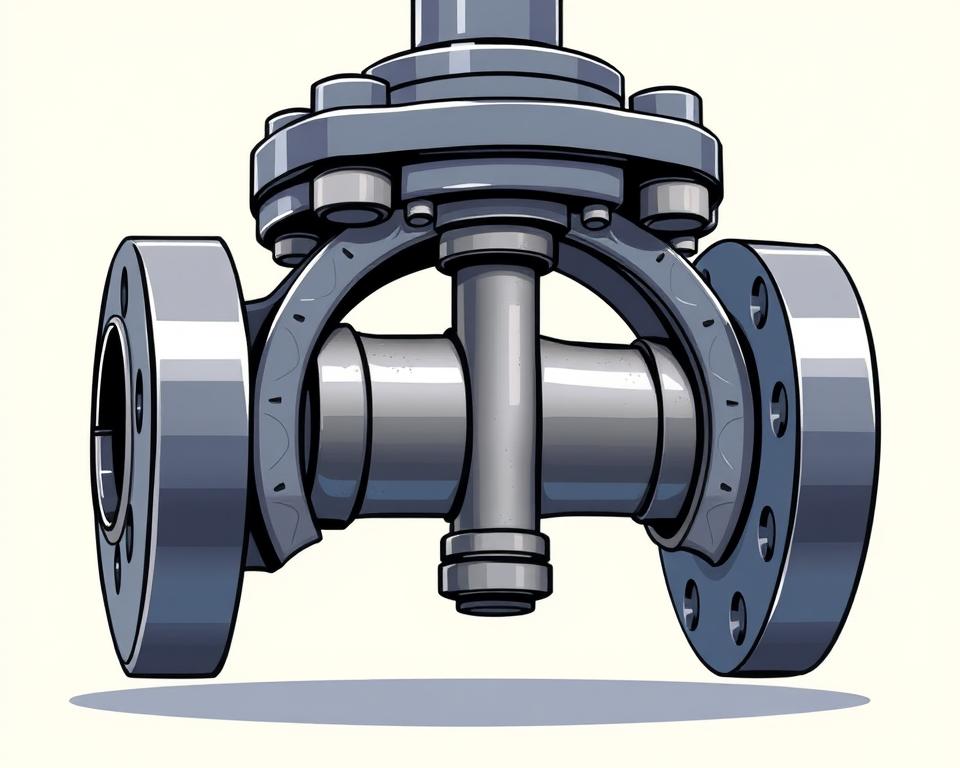Cast Iron Gate Valve Solutions: Long-Lasting Utility Flow Control
Surprising fact: Over sixty percent of city water mains still rely on legacy shutoff equipment for dependable isolation during emergencies.
Our workhorse line of Cast Iron Gate Valve Manufacturer designed for extended service life in industrial, commercial, and municipal use throughout the U.S.. Each unit pairs a rugged body-and-bonnet assembly with a proven gate design to resist wear and limit corrosion under variable pressure and temperature cycles.
The straight-through gate cuts flow restriction when open, helping systems move water and compatible media with minimal headloss. Designers and maintenance teams appreciate the straightforward serviceability, standard connection options, and widely available parts that streamline selection and repairs.
This range includes several series and class ratings to meet common duty ranges, end connections, and operator preferences. Expect repeatable sealing, consistent operating torque, and cost-effective ownership centered on uptime and low life-cycle cost.
Highlights
- Designed for rugged shutoff and reliable flow control in varied environments.
- Robust build stands up to wear, corrosion, and mechanical stress.
- Gate geometry offers low flow restriction and reduced pressure loss.
- Available in several series and class ratings to match typical requirements.
- Service-friendly design, standard parts, and predictable sealing improve uptime.
Reliable, Precise Flow Control with Cast Iron Gate Valves
Precision shutoff valves with precision wedges and machined seats deliver steady performance across commissioning, operation, and shutdown cycles. Rigid iron bodies and close-tolerance seating produce consistent sealing. That consistency supports safe isolation and reduces unplanned downtime.
Smooth-operating behavior reduce handwheel effort and enable confident wedge positioning. Straightforward stems and common accessories make it easy to adapt a valve to handwheel or actuation. Less effort speeds routine checks and repairs.

Rising vs Non-Rising Stem Performance
| Aspect | Rising-Stem | Compact NRS |
|---|---|---|
| Open/close visibility | High — visual indicator | Low — minimal external cue |
| Clearance needs | Needs headroom | Good for confined/buried installs |
| Inspection | Straightforward inspection | Low profile with similar longevity |
When fully opened, the straight-through, full-port passage delivers low pressure loss and smooth throughput. Tight shutoff reduces leakage risk and helps maintain target pressure for downstream equipment. Together, these qualities reduce total life-cycle cost and boost system uptime across common commercial and light industrial applications.
Design Choices and Options: Cast Iron Gate Valves
Key design selections—body material, stem type, and flange pattern—determine fit, function, and maintainability.
Body and bonnet construction
The body and bonnet are made from cast iron for strength and resistance to vibration. Machined guides keep the gate aligned for dependable sealing.
Rising Stem vs Non-Rising Stem
A rising stem gives a clear visual indication of position and is simple to inspect but needs extra headroom. A non-rising stem minimizes vertical space and keeps threads protected inside the bonnet.
Both stem designs work with common handwheels and can be actuator-ready or add-on position indicators when automation is required.
Understanding Class 125 Performance
ASME Class 125 is widely used for water and general service within moderate temperature ranges. Verify with published pressure-temperature limits to ensure suitability for the intended operating envelope.
Connections and Face-to-Face Dimensions
| Parameter | Spec | Remarks |
|---|---|---|
| Flange drilling | Standard ASME drilling | Fits standard piping layouts |
| F2F length | Industry series lengths | See datasheet for dimensions |
| Bolting | Specified grade/torque | Gasket choice influences seal |
- Sizes/series: from small diameters up to large mains with multiple series and trim options for long life and easy service.
- Trim choices and packing: seat and wedge materials blend tight shutoff and longevity; improved packing with bonnet gaskets tighten stem sealing.
- Integration tips: verify F2F length, bolt patterns, and torque values ahead of install.
Use Cases, Compliance, and Integration
Applications for these Resilient Seated Gate Valve span municipal water mains, building risers, and pump-room isolation points where reliable shutoff is essential.
Water distribution and fire systems commonly apply these as sectional/control points. They offer readable position and strong shutoff for life-safety and utility networks.
Bi-Directional Service: Flow and Shutoff
The gate design permits shutoff in both flow directions when installed per manufacturer guidance. This flexibility simplifies layout decisions and works with redundant runs.
Maintenance, stem sealing, and bonnet integrity
Accessible bonnet bolts, guided gates, and serviceable packing speed inspections and repacking. Proper packing adjustment maintains stem sealing under frequent operation.
Indicators, OS&Y, and direction practices
External indicators and OS&Y styles provide visible open/closed status for inspections. Even with bi-directional capability, follow recommended direction orientation and clearance rules to ensure safe operation.
| System | Primary Benefit | What to Verify |
|---|---|---|
| Municipal mains | Dependable isolation | Verify Class 125 limits |
| Sprinkler/standpipe | Clear status for inspectors | Select indicator or OS&Y |
| Mechanical rooms | Maintenance friendly | Confirm flange/F2F compatibility |
Conclusion
Invest in proven shutoff equipment that pairs sturdy construction with predictable flow control.
You get durable isolation and consistent control for water and utility applications. Expect straightforward installation and service-friendly upkeep for lasting reliability.
Key specs include Class 125 rating, a robust body and bonnet, and engineered stem sealing to maintain performance across building and plant environments.
Multiple series and common sizes, plus handwheel or actuator-ready configurations, make system matching simple. Visible position indication and smooth stem travel enhance daily operation and response under changing conditions.
The gate wedge and seat delivers tight shutoff and low pressure drop. Verify sizes, end connections, and accessories at specification time to speed procurement and commissioning.
Select valves built to rigorous standards. Our specialists can validate class, sizing, and series to match your operating and maintenance objectives.